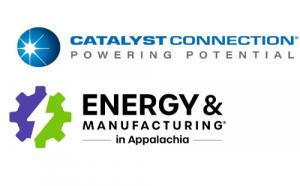New Report Finds Appalachia is Ready to Lead in Natural Gas Carbon Capture
Regional manufacturers are well-positioned to supply the growing carbon capture market.
As a major producer of natural gas, Appalachia is poised to lead the industry into the next generation. We have the expertise and capacity to manufacture and deploy carbon capture technologies.”
PITTSBURGH, PA, UNITED STATES, November 12, 2025 /EINPresswire.com/ -- Natural gas remains the largest source of electricity in the United States at 43% of total generation. Deploying carbon capture technologies can ensure natural gas continues to be a major part of the nation’s energy mix. A new report from the Energy & Manufacturing in Appalachia (EMA) initiative explores key supply chain opportunities in the natural gas carbon capture market for regional manufacturers. — Petra Mitchell, President and CEO of Catalyst Connection
The EMA initiative is led by Catalyst Connection, southwestern Pennsylvania’s economic development organization, along with the following regional partners: Alliance for Manufacturing and Technology (AMT), Industrial Modernization Center, Magnet, Manufacturers Resource Center, MANTEC, Maryland MEP, Northeastern PA IRC, Northwestern PA IRC, Reimagine Appalachia, and West Virginia University.
“As a major producer of natural gas, Appalachia is poised to lead the industry into the next generation,” said Petra Mitchell, President and CEO of Catalyst Connection. “We have the expertise and capacity to manufacture and deploy the carbon capture technologies vital to powering America.”
Energy Demand Driving Growth in Carbon Capture Market
The Marcellus shale region stretches across Pennsylvania and West Virginia, extending into parts of New York and Ohio. The U.S. Geological Survey believes it may hold the largest recoverable natural gas supply in the country. Natural gas generation already accounts for 59% of Pennsylvania’s electricity generation, with the potential to support growing demand from new industries such as AI data centers.
Carbon capture technologies are used to remove carbon dioxide (CO2) at the emission source, so that it can be sequestered and kept out of the atmosphere. Natural gas plants using liquid solvent-based systems, such as Shell’s CANSOLV technology, can capture up to 90% of a plant’s CO₂ emissions. Carbon capture technology development has enjoyed bipartisan support at the federal level, and a key tax credit was expanded in recent legislation signed by President Trump.
The United States leads the global carbon capture industry, with total capture capacity expected to reach 1,500 million metric tons (Mt) of CO₂ per year by 2050, nearly half of which will come from electricity generation using natural gas and other fossil fuels. The carbon capture industry is projected to create up to 1.8 million new jobs across sectors, including materials manufacturing, engineering and design, construction, transportation, and operations and maintenance.
To sustain this growth trend, continued federal and state investment is essential to lowering current costs and addressing technical challenges. Currently, installing a new system at a large natural gas power plant can exceed $500 million in capital cost. As the industry grows, more infrastructure must be developed to transport and safely store the large volumes of CO2. Tax incentives, research and development, and climate targets will be key drivers to the viability of the carbon capture market.
Natural Gas Carbon Capture Supply Chain Opportunities
EMA’s Energy Overview Segment: Carbon Capture report explores manufacturing supply chain opportunities within the liquid-solvent carbon capture market. Each large-scale carbon capture installation requires hundreds of precision-engineered parts, creating opportunities for small and medium-sized manufacturers to participate in the growing carbon management supply chain, including:
• Solvents such as triethylene glycol (TEG) and methylamine.
• Centrifugal pumps, compressors, and blowers used to move gas and solvent through the system.
• Heat exchangers, absorbers, and dryers for managing moisture and temperature in CO₂ streams.
• Reactor vessels to house the absorber and stripper columns.
• Piping, fittings, and control systems for pressure management and safety.
Read the full report
About Catalyst Connection
Catalyst Connection is a southwestern Pennsylvania economic development organization dedicated to serving manufacturers. For more than 35 years, Catalyst has operated with a focus on powering potential through delivering technical assistance and management consulting services and developing long-standing partnerships across the region. Catalyst maintains a deeply held commitment to modernizing manufacturing and enabling opportunity across business enterprises, individuals, and throughout communities.
Catalyst Connection is supported, in part, by the Pennsylvania Department of Community and Economic Development and the National Institute of Standards and Technology Manufacturing Extension Partnership (NIST MEP). As such, we are an affiliate of the Pennsylvania Industrial Resource Center (IRC) and the MEP National Network in southwestern Pennsylvania.
About the Energy & Manufacturing in Appalachia Initiative
The Energy & Manufacturing in Appalachia (EMA) initiative provides technical assistance and business support to small and medium manufacturers and enterprises in 156 counties of Maryland, New York, Ohio, Pennsylvania, and West Virginia seeking to expand business, production, and jobs in the energy supply chains or to be more energy efficient.
Allison Moux
Catalyst Connection
+1 412-918-4252
email us here
Visit us on social media:
LinkedIn
Instagram
YouTube
X
Legal Disclaimer:
EIN Presswire provides this news content "as is" without warranty of any kind. We do not accept any responsibility or liability for the accuracy, content, images, videos, licenses, completeness, legality, or reliability of the information contained in this article. If you have any complaints or copyright issues related to this article, kindly contact the author above.

